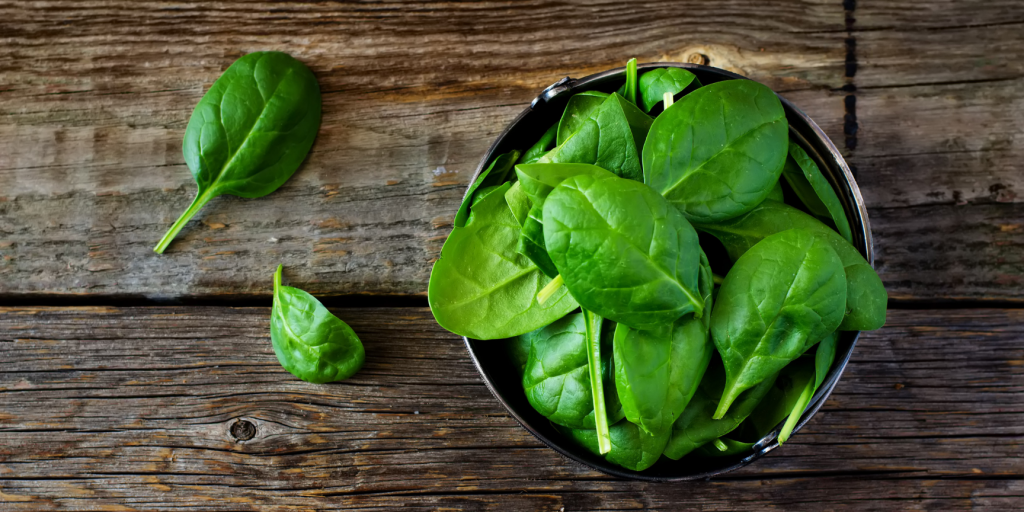How Much Protein Is in Spinach? Uncovering the Nutritional Truth

Spinach is often hailed as a superfood, celebrated for its rich nutritional profile and myriad health benefits. Among its many virtues, the protein content in spinach is frequently discussed, especially by those looking to boost their diet with plant-based sources. While it may not pack the same protein punch as legumes or nuts, spinach does contribute a respectable amount of this essential nutrient. In this piece, we will delve into the protein content of spinach, exploring how it fits into a balanced diet and why it deserves a place on your plate.
Understanding Spinach’s Nutritional Profile
Basic Nutritional Facts
Spinach is a low-calorie leafy green packed with essential nutrients. A 100-gram serving of raw spinach contains approximately 23 calories, making it an excellent option for those looking to manage their weight. This serving size also provides about 2.9 grams of protein, which, while modest, can contribute to your daily protein intake when combined with other sources. In addition to protein, spinach is rich in vitamins A, C, and K, offering 187% of the recommended daily intake of vitamin A. It also supplies vital minerals such as iron, calcium, and magnesium. Furthermore, spinach is high in dietary fibre, aiding in digestion and promoting gut health. With its low fat and carbohydrate content, spinach is a versatile and nutritious addition to any diet.
Comparisons to Other Vegetables
When comparing spinach to other vegetables, its nutritional profile stands out in several ways. For instance, kale, another leafy green, offers around 4.3 grams of protein per 100 grams, slightly more than spinach. Broccoli, known for its high protein content among vegetables, contains about 2.8 grams of protein per 100 grams, on par with spinach. However, spinach surpasses many vegetables in its vitamin K content, providing a significant percentage of the recommended daily intake. In terms of iron, spinach is often touted as a superior plant-based source, containing more iron than even kale and broccoli. While vegetables like peas and sweetcorn offer higher protein content, spinach excels in its overall nutrient density, particularly in vitamins and minerals. This makes spinach a valuable addition to a varied and balanced diet, complementing other vegetables to ensure comprehensive nutritional coverage.
Protein Content in Spinach
Protein per Serving
Understanding the protein content of spinach per serving can help you better incorporate it into your diet. A typical serving size of spinach is roughly one cup of raw leaves, which weighs about 30 grams. This serving provides approximately 0.9 grams of protein. While this may seem modest, spinach is often consumed in larger quantities or combined with other protein-rich foods. For cooked spinach, a cup (about 180 grams) contains around 5.4 grams of protein, making it a more substantial source of this nutrient. Additionally, spinach is low in calories, allowing you to consume generous portions without impacting your caloric intake significantly. When planning meals, consider combining spinach with other high-protein foods such as beans, tofu, or nuts to create a balanced and nutrient-dense dish. This way, you can maximise your protein intake while benefiting from the other vitamins and minerals spinach offers.
Factors Affecting Protein Levels
Several factors can influence the protein levels in spinach, affecting its nutritional contribution. One significant factor is the spinach’s growing conditions. Soil quality, sunlight exposure, and water availability can all impact the nutrient content of the plant, including its protein levels. Additionally, the variety of spinach plays a role, with certain types like Savoy and semi-Savoy potentially offering slight variations in protein content. The way spinach is prepared and consumed also matters. Fresh, raw spinach might have different protein levels compared to cooked spinach due to the concentration of nutrients as the leaves wilt and reduce in volume when heated. Moreover, preservation methods such as freezing can affect the protein content, although minimally. Lastly, the age of the spinach leaves can influence their nutritional profile, with younger leaves generally being more tender and possibly containing different nutrient levels compared to mature leaves. Understanding these factors can help you make informed dietary choices to maximise your protein intake from spinach.
Health Benefits Beyond Protein
Vitamins and Minerals in Spinach
Spinach is a powerhouse of vitamins and minerals, offering a myriad of health benefits beyond its protein content. It is particularly rich in vitamin K, which is vital for blood clotting and bone health. A single cup of raw spinach provides over 180% of the recommended daily intake of vitamin K. Spinach is also an excellent source of vitamin A, essential for eye health, and vitamin C, which supports immune function and skin health. Additionally, it contains significant amounts of folate, a B-vitamin crucial for DNA synthesis and repair, making it especially important for pregnant women. The mineral content of spinach is impressive as well, with notable levels of iron, which is necessary for red blood cell production, and magnesium, which plays a role in muscle and nerve function. By including spinach in your diet, you can benefit from these essential nutrients, contributing to overall well-being and disease prevention.
Antioxidant Properties
Spinach is renowned for its potent antioxidant properties, which help protect the body against oxidative stress and inflammation. These antioxidants include flavonoids, carotenoids, and vitamins C and E. Flavonoids, such as quercetin and kaempferol, have anti-inflammatory and anti-cancer effects, potentially reducing the risk of chronic diseases. Carotenoids, including beta-carotene, lutein, and zeaxanthin, are crucial for eye health, helping to prevent conditions like cataracts and age-related macular degeneration. Vitamin C, a powerful antioxidant, supports immune function and skin health by neutralising free radicals. Vitamin E also contributes to skin health and protects cell membranes from oxidative damage. By incorporating spinach into your diet, you can harness these antioxidant benefits, aiding in the prevention of various diseases and promoting overall health. Regular consumption of spinach can thus be a simple yet effective strategy for enhancing your body’s defence mechanisms.
Incorporating Spinach into Your Diet
Simple Spinach Recipes
Adding spinach to your diet can be both easy and delicious with a few simple recipes. For a quick and nutritious breakfast, consider a spinach and feta omelette. Simply sauté a handful of spinach in a pan until wilted, then pour in beaten eggs and sprinkle with crumbled feta cheese. Cook until the eggs are set and the cheese is melted. For lunch or dinner, a spinach and chickpea salad is a fantastic option. Toss fresh spinach leaves with cooked chickpeas, cherry tomatoes, red onion, and a lemon-tahini dressing for a satisfying meal. Another effortless recipe is spinach pesto pasta. Blend spinach with garlic, pine nuts, parmesan cheese, olive oil, and a squeeze of lemon juice to create a vibrant pesto sauce. Toss it with your favourite pasta for a quick and healthy dish. These recipes make it simple to enjoy the nutritional benefits of spinach in your daily meals.
Tips for Maximising Nutritional Intake
To get the most out of spinach, consider a few tips for maximising its nutritional intake. Firstly, pair spinach with vitamin C-rich foods like citrus fruits or bell peppers. Vitamin C enhances the absorption of iron from plant sources, making it easier for your body to utilise this essential mineral. Secondly, opt for a mix of raw and cooked spinach. While raw spinach provides more vitamin C, cooking spinach can increase the availability of other nutrients like vitamin A and calcium. Steaming or sautéing spinach briefly helps to retain its nutrient content while making it more digestible. Washing spinach thoroughly before use is essential to remove any pesticides or contaminants. Lastly, store spinach properly to maintain its freshness and nutrient quality. Keep it in a cool, dry place and use it within a few days of purchase. By following these tips, you can ensure you’re getting the maximum health benefits from spinach.
Myths and Misconceptions
Debunking Common Myths
There are several myths surrounding spinach that need debunking. One common misconception is that spinach is the best source of iron. While it does contain iron, the type found in spinach is non-heme iron, which is less easily absorbed by the body compared to heme iron from animal sources. Pairing spinach with vitamin C-rich foods can improve absorption. Another myth is that spinach loses all its nutrients when cooked. While cooking does reduce some water-soluble vitamins like vitamin C, it can increase the bioavailability of other nutrients, such as vitamin A and calcium. It’s also falsely believed that spinach can cause kidney stones due to its oxalate content. While it’s true that oxalates can contribute to kidney stones, moderate spinach consumption is generally safe for most people. Understanding these facts helps you make informed choices about including spinach in your diet without falling for common myths.
Scientific Backing
Scientific research supports the numerous health benefits of spinach, debunking many myths and misconceptions. Studies have shown that the antioxidants in spinach, such as flavonoids and carotenoids, have significant anti-inflammatory and anti-cancer properties. Research also confirms that while spinach contains non-heme iron, combining it with vitamin C-rich foods can enhance iron absorption. Additionally, the notion that cooked spinach loses all its nutrients is dispelled by findings indicating that cooking increases the bioavailability of certain nutrients, including vitamin A and calcium. Furthermore, moderate consumption of spinach is generally considered safe and beneficial, even for individuals concerned about oxalates and kidney stones. The high levels of vitamins, minerals, and antioxidants present in spinach are well-documented in scientific literature, reinforcing its role as a valuable component of a balanced diet. This evidence-based understanding helps clarify the nutritional value of spinach and supports its inclusion in regular dietary practices.
Fitatu Support Group
Join our Facebook community! Discover inspiring recipes daily, receive support from other healthy eating enthusiasts, and benefit from professional dietitian advice from Fitatu. Get inspired and take care of your health in the best company!

Fitatu® app
Download the app from the Google Play Store or Apple Store and start tracking your macros with us!
Prefer the web version? No problem. A basic web version is available for our subscribers.
What else is included in Fitatu® Premium?
- over 2000 recipes, plus dozens of new ones every month,
- additional intermittent fasting plans,
- the ability to create shopping lists,
- 7 ready-made meal plans,
- filtering products and recipes,
- more sync options with fitness apps,
- access to the web version of the app,
- no ads!










